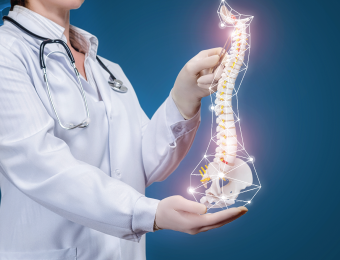
Spinal Intervention
Common causes of back pain in young adults include:
- Back strain, myofascial pain syndrome, or office syndrome, which involves inflammation and tension in the back muscles and spinal ligaments.
- Cervical disc herniation or lumbar disc herniation, which occurs when the cushions between the vertebrae in the neck or lower back become displaced, potentially compressing nerves.

Back pain in young adults often stems from daily activities or poor posture, commonly encountered during working years. Treatment typically involves rest, modifying activities, medication, and physical therapy. In cases of nerve compression due to disc herniation, there are now options like selective nerve root block and epidural steroid injection. These injections, containing highly effective anti-inflammatory medications, can reduce inflammation around the spinal discs and nerves, alleviating compression and leading to improved symptoms, potentially avoiding the need for surgery.
Common causes of back pain in the elderly population include:
- Osteoporotic Vertebral Compression Fracture: Weakening of the bones due to osteoporosis can lead to fractures in the vertebrae, resulting in compression and pain.
- Spinal Stenosis: Degeneration of the spine can cause narrowing of the spinal canal, leading to compression of the spinal nerves and resulting in pain, weakness, or numbness in the legs.

Back pain often occurs in elderly individuals, particularly when there is osteoporosis, which can lead to fragile bones, especially in the spine. In cases where the bones are weakened, there may be significant pain. Fortunately, there are non-surgical treatment options available today.
For osteoporotic vertebral compression fractures, a procedure called vertebroplasty can be performed. This involves injecting liquid cement into the fractured vertebrae. Once the cement hardens in about 15 minutes, it stabilizes the fractured bone, relieving pain almost immediately. Patients can then return to their normal activities.
In cases of spinal stenosis where the condition is mild or not yet severe, steroid injections into the nerve root and epidural space can be used to avoid surgery. However, if the condition is severe, a decompressive laminectomy may be necessary. This surgical procedure involves widening the spinal canal to relieve pressure on the nerves. It is not complex and does not require fusion or metal implants, allowing for quick recovery and improvement in symptoms.
18 Jan, 2024

MONTIEN SIRISUNTORNLAK, M.D.
Specialties Orthopedic Surgery, Spine Surgery
 EN
EN
 TH
TH CN
CN


